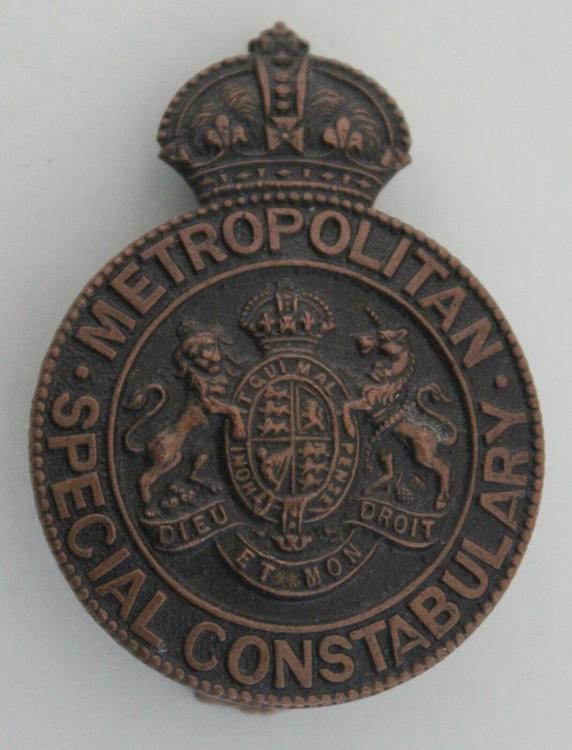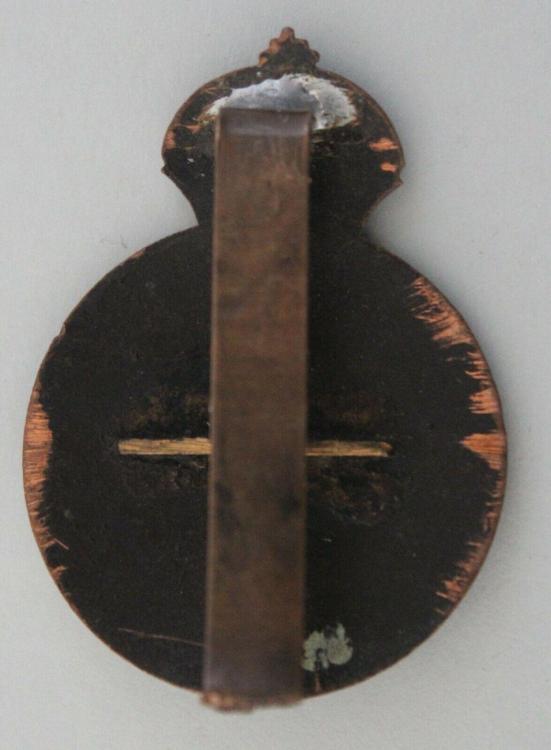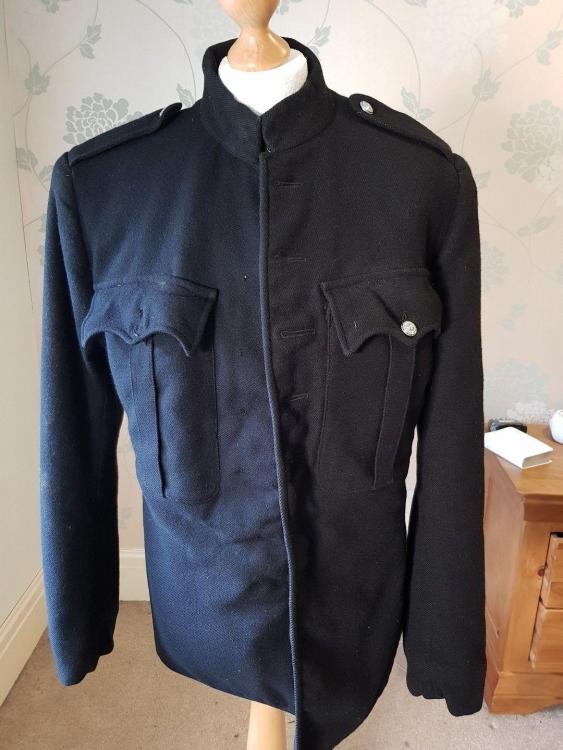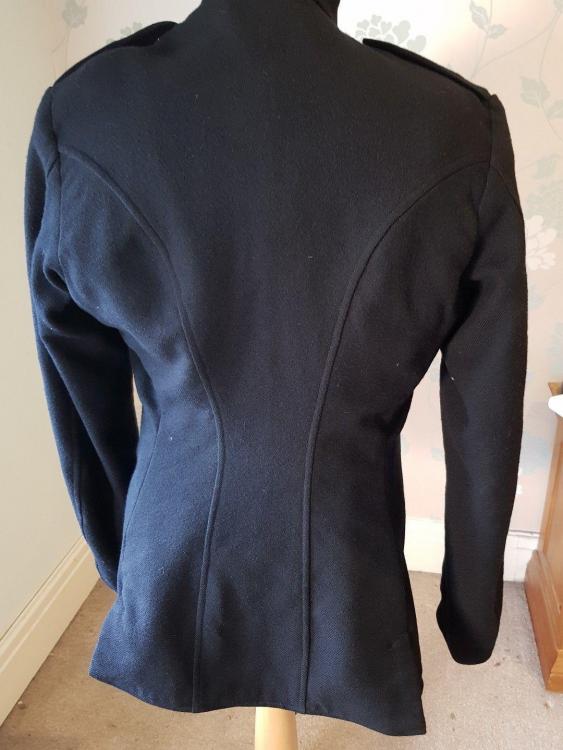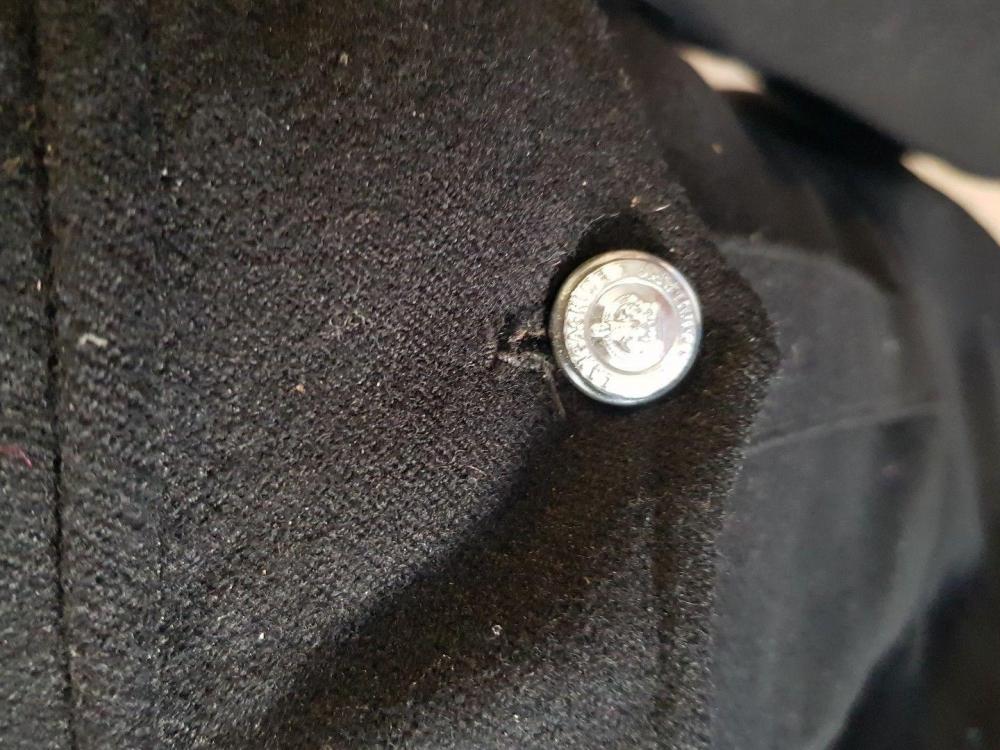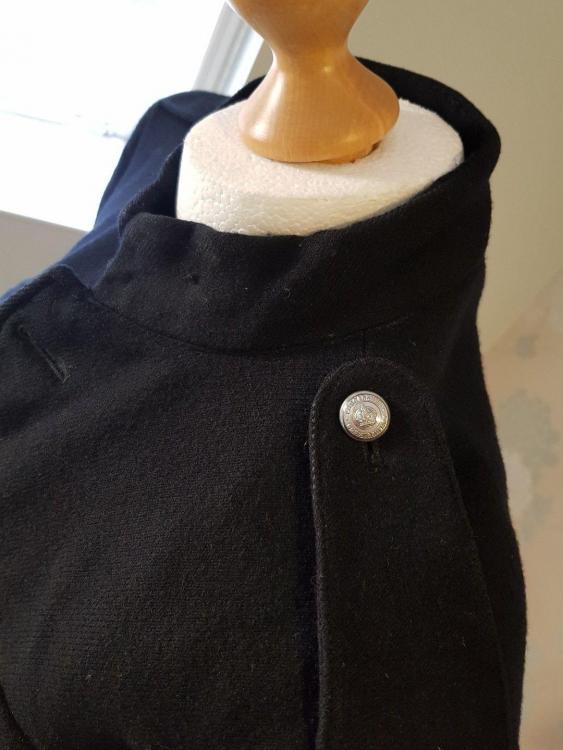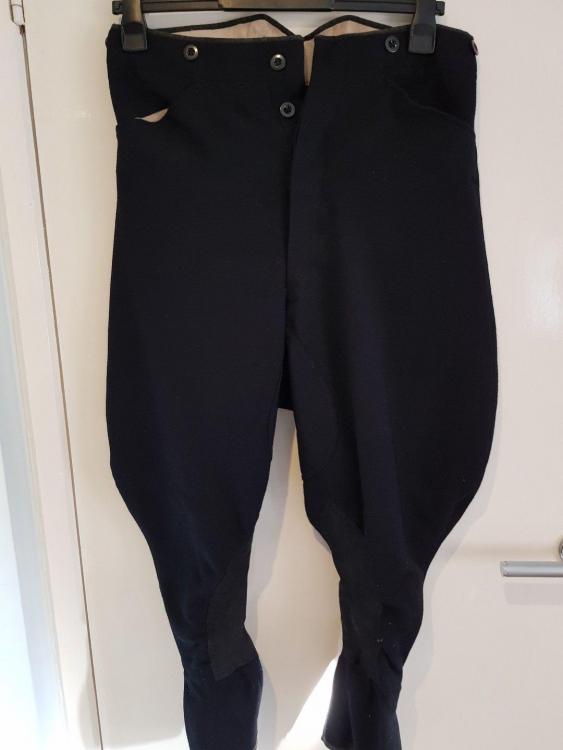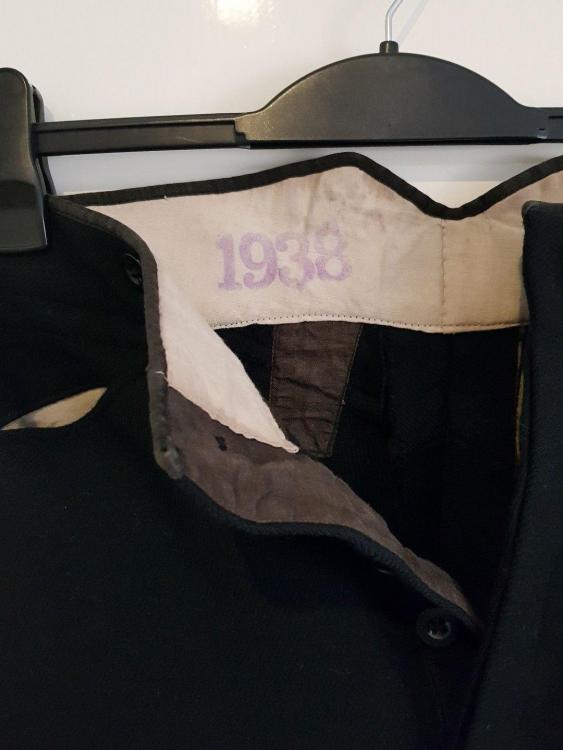
ayedeeyew
Active Contributor-
Posts
103 -
Joined
-
Last visited
Content Type
Profiles
Forums
Blogs
Gallery
Events
Store
Everything posted by ayedeeyew
-
My understanding was as per the following information from his Wiki entry - namely that although guilty of multiple murders he was only ever convicted of one - his wife - essentially on the grounds of it being the one with which a conviction was most likely to be secured (and succeeded): https://en.wikipedia.org/wiki/John_Christie_(murderer) “Christie was tried only for the murder of his wife Ethel. His trial began on 22 June 1953, in the same court in which Evans had been tried three years earlier. Christie pleaded insanity and claimed to have a poor memory of the events. Dr. Matheson, a doctor at Brixton Prison who evaluated Christie, was called as a witness by the prosecution. He testified that Christie had a hysterical personality but was not insane. The jury rejected Christie's plea, and after deliberating for 85 minutes found him guilty. Christie did not appeal against his conviction.”
-
Medal Index Card of John Christie confirms entitlement to the standard BWM and VM only. It is interesting to note that the card bears a pencilled inscription of 11 over 5 over 53. This is a simple date code to show that the card was examined on the 11th of May 1953. Given Christies arrest on the 31st March 1953 and trial beginning on the 22nd June the same year it appears that his surviving military records were being checked as part of this process. Given Christie had sold virtually everything of value by the turn of 1952/53 and was reduced to living in near poverty it is likely that his medals (if still surviving in his possession at that time) went the same way before his crimes were detected...
-
I'm looking to get some KC black Special Constabulary buttons to finish off a tunic project. For those who don't know the style, these are the black pressed horn or plastic buttons with the King's Crown at the centre and the "pie crust" edging. I have attached an image below. I am mostly looking for the smaller pocket/epaulette sized buttons as I do not have enough of these at present, but I am also struggling to put together a decent matched set of five larger ones for the front from what I have already, as they vary so much in design and particularly size even when they came from the same maker. Firmin seems to be somewhat better in this respect at least. So if anyone has spares of these they are looking to part with, please leave a message or get in touch. Thanks .
-
Thought I would give this one a bit of a bump, with a recent Ebay acquisition. It is now a slidered bronzed finish Metropolitan Special Constabulary badge, but it clearly started out life as a lapel badge and has been subsequently modified. The overall standard of the work is best described as crude but strong and functional. I suspect it has been done relatively recently, presumably for similar reasons as outlined above, but for £5 including P+P I am very happy with it:
-
Sent this to my mother, who is a dab hand at transcriptions, and she had these three observations: Without even knowing details of the Piddington family she thought it was not MR/MRS, but Wm. - the standard abbreviation for William Not "Yours sincerely" but a "Yours TRUELY", possibly with a missing E. Note the wayward slash of the T over the middle of the word, which is repeated in words like "thought", "photographs" and "think". She read the last sentence as "Thanking you and APOLOGISING".
-
Police rattle?
ayedeeyew replied to David68's topic in Great Britain: Mervyn Mitton's British & Colonial Police Forces
Standard WW2 era gas rattle, eg: https://bananamafiamilitaria.co.uk/original-ww2-british-home-front---air-raid-precautions-arp-gas-rattle-mkii-1939-1704-p.asp -
Back in March, I acquired a virtually mint unused pairing of a 1943 dated Lancashire Police 7-button jacket and 1938 dated riding breeches from Ebay for the grand sum of £39 (including UK P+P). When I inquired about the provenance, I was told the following story: "Morning. I'm glad you're happy with them. The uniform was found in a milk churn along with another pair of breeches which I'm listing shortly. I asked my partners mother who is 88 who told me several stories. At hay-making time some police used to work on the side for a few extra pounds and extra large ham sandwiches and tea with whisky in it. Also because the police headquarters is at the back of us some police used to pop in for a nightcap. If it was snowing they would be hemmed in and sometimes items of clothing would be left behind. The other pair of breeches where a policeman who had dropped them whilst riding his bike. The mother in law couldn't see who was riding to return them to the owner so kept them until the rightful owner was found but he never was lol." Not sure quite how much of that is true, but I have no reason to believe it was made up to enhance the value! Since then I have been gradually acquiring the bits needed to restore the tunic to its former glory and was able to start work on Saturday evening. These are the results... Below - jacket as received. Only the two epaulette buttons and one of the chest pocket buttons remained. Those three remaining buttons were all a matched trio of Lancashire Constabulary KC chrome buttons. I actually bought this tunic to use for WW2 Police kit, but have since decided not to - curiously, though clearly at least lightly used/worn it has never had either the collar or epaulettes pierced for insignia: And the breeches: After three and a half months, I finally had put together a set of buttons that would do the tunic justice. The smaller is a perfect match in every respect to the original three, the larger comprise a perfectly matched set of 5 that came from South Africa, a perfectly matched example to those that came from the UK, and another that only the most OCD would spot is not a perfect match to the rest! And after - now looking much as it would have done back in 1943: There was one more job to be done - one of the few signs of wear/use was a seam split under the right arm that appears to have been somewhat crudely repaired in the past (possibly the real reason the jacket had been left at the farm?): And after a little work with the needle and thread: And the rest of the spares (!) acquired in the process of getting the set of buttons up to a standard I was happy with:
-
First things first - having worked in the costume industry and enjoying living history as a hobby - unless the provenance is impeccable, etc, then don't be fooled by the buttons/insignia a tunic like this has on. As the pattern had been largely unchanged since the 1850's when introduced they still enjoy plenty of use representing Police of earlier periods from when the jacket itself might have been made. My own jacket (mentioned below) I use for Ripper era is a good example. Having said that, nothing from the pictures you posted screams wrong, so you might have a nice untouched original set up. As touched upon above, the best way to date these tunics... is to find the date. This might seem obvious, but buttons/numbers/etc are easily changed, so not reliable indicators. Most of these type jackets are dated underneath one of the lower skirt pockets. I illustrate my 1956 example below: The number 12 above is the size, which will be what the number 10 refers to. This particular example was reissued or inspected in 1962, and it is this marking that is found inside the right shoulder: Earlier jackets can be found marked in differing locations - this 1918 example is marked in the main body of the jacket, in the back section: These last two were in two items of WW2 era kit acquired recently - breeches with basic 1938 stamp in back section, and tunic with basic 1943 date in right armpit:
-
That's a very useful post, and builds nicely upon something I was saying in another thread some while ago where certain forum members seemed to think the marking was that of the Woolwich Dockyard instead of correctly being the War Department! http://gmic.co.uk/topic/60591-the-start-of-my-collection/?tab=comments#comment-568905
-
The late Victorian/early Edwardian pattern plates can be found if you keep your eyes peeled - having been looking for one for some time now I am aware of about 4 or 5 that have been offered for sale over the last year or so. For some reason they tend to turn up at the smaller auction houses where I didn't learn about them until their online catalogue listings turn up on Google searches several weeks (if not months) after the fact... A noticeable exception was one listed on Ebay at the end of April. The seller was in the US, and for some reason Ebay had told him the plate was a prohibited item to own in the UK - this is of course complete nonsense, since they have been obsolete since before the Great War! As a result the seller wouldn't ship directly to the UK and wouldn't be convinced otherwise, but after a lengthy conversation the seller agreed to let me bid on the grounds I would have it shipped to a friend-of-a-friend in the US, who would then forward it to me. End day came, and with a much lighter wallet I became the proud owner of the plate to 131 C : http://postimg.org/image/k1fezhc9n/
-
Time for another update - finally finished my 1897 jacket. This was a based on an original probably interwar RA dress blue jacket that I had professionally converted to more closely resemble the correct pattern: http://postimg.org/image/70it33tgb/ http://postimg.org/image/araywqnyz/ http://postimg.org/image/41idmrhln/ http://postimg.org/image/474yyrzdn/ So now I have all the basics to get my WW1 Police kit in use. Only took about 6 years in the end... took advantage of the nice weekend to get some shots in wear done. In tunic: http://postimg.org/image/l9nj5tqsb/ And with frockcoat added for night use: http://postimg.org/image/6em4cpnff/
-
Another update - my 1906 to 1930's plate is finally complete! The last number was fitted to the plate, and the plate then fitted to the helmet I had prepared earlier. Just like the other original fittings it's now held firmly in place by short sections of matchsticks: http://postimg.org/image/unhhqq3ez/ http://postimg.org/image/46w1mopxt/ http://postimg.org/image/kejxhpjvx/ And alongside my earlier pattern helmet: http://postimg.org/image/y5ha7eb03/
-
Another few months on, and a few more updates... My Great War era kit is nearly done, but there are a couple of minor hurdles to overcome. First my 1897 pattern jacket is approaching completion. The only thing I am lacking now is a decent matched pair of pocket sized buttons to finish it. What I have is: http://postimg.org/image/7c88prnm9/ If anyone has a pair or an example that matches one of the two on the right I have already got that they would be happy to part with please let me know. The group of six tunic buttons are reproductions available through the Ragged Victorians: http://www.raggedvictorians.co.uk/page25.htm I am aware of a set of originals on Ebay, but although the Buy-It-Now price is very reasonable the P+P listed from the US to the UK is completely extortionate, and the seller hasn't responded to any messages asking about this: http://www.ebay.co.uk/itm/231841503735?_trksid=p2055119.m1438.l2649&ssPageName=STRK%3AMEBIDX%3AIT My helmet plate has advance another original no.1 and a later letter H which will work with a little modification until such time as I can find an original. I am still lacking a no.7, and have four x 0's, two x 6/9's and one x 8 to swap or trade for one. Ideally looking for the 12-13mm high type with lugs pierced for being held in place with a pin rather than the folding prongs if possible but anything suitable will be given consideration. Plate: http://postimg.org/image/b6j72s09j/
-
Next I removed the medal ribbon bar - no easy task, having been sewn on by a machine very thoroughly through the whole thickness of the frockcoat! This done, I repeated the ironing through a damp cloth, which eliminated most of the traces of its presence that had been left. So begin the "easy" part - changing over the buttons. The buttons and tabs for epaulettes were removed permanently, the shoulders getting the iron and damp cloth treatment again to remove marks. Each remaining Hampshire Regiment button was then removed one at a time, all old stitching being removed, and the horn buttons stitched on. I started with the four on the lower back, then the six functioning buttons on the front, leaving it looking like this at the half-way point: http://postimg.org/image/qynj9imtl/ A lot more hours later, and voila: http://postimg.org/image/x9cj3pscf/full/ http://postimg.org/image/yfe38z37r/full/ Buttons now fully changed over to horn, and collar numbers added as well. I also tweaked the collar closing a little to get a better fit, a previous wearer having loosened the top quite considerably at some point. I should point out I have no evidence such Police frockcoats ever had cuff-buttons, but as this was now pierced for them and I had horn buttons in the right size I decided to make use of them. In due course I hope to get some pictures of me wearing it with the rest of the appropriate kit.
-
The Duty Armlet loops seemed a good place to start. An appeal for some scraps of similar material on Ebay got no reply. So I asked Hainsworths for some of their samples of similar materials - and one proved an excellent match. Some cutting and sewing on the machine later, and I had my two loops, plus some spare material - one to keep for reference purposes, the other for using in patching the tear: http://postimg.org/image/6v5cdflk3/full/ The loops were then tacked onto the left cuff so they held the Armlet the regulation 3-inches above the cuff. On the left cuff, I cut a small piece of the remaining sample material, and used needle and thread to lightly hold it in place (so it would not be free to fall down between the outer and inner material) as I carefully inserted it behind the tear so as to reinforce the damaged area and also potentially help hide any colour difference (the exposed lining being bright white). I then heavily overstitched the tear (making sure several of the stitches caught the lower material to permanently hold it in place) until I was satisfied with the result. The original tacking stitches were then removed. The left sleeve also had various remains of stitching from now absent military badges. This was carefully removed. Both cuffs were then ironed through a damp cloth - leaving them looking as follows. Quite a change for the better already! http://postimg.org/image/43a7anosr/full/
-
And to begin the updates... As I mentioned on another thread recently, for several years I have been looking into replicating the style of frockcoat worn by the Metropolitan Police as worn on certain occasions at the tale end of the 19th/beginning of the 20th century. I found this something of a challenge, as by the mid-20th century standard issue Police greatcoats had so far evolved in style, material and various other ways as to be useless to me, even with the possibility of modifying something. So I needed something in a similar style as seen below: Typical very late 19th century illustration: http://postimg.org/image/vrp409yy7/ London Police c.1903: http://postimg.org/image/f738ynppv/ Typical slightly later version (late 1900's/early 1910's): http://postimg.org/image/ijqmxi3bb/ As can be seen, even in this short period of time the frockcoats were subject to minor change, with the buttons down the front gradually flaring out further towards the top with the passage of time. One thing that quickly caught my eye on Ebay was the use by the army of very similarly patterned frockcoats until at least relatively recently, generally more senior officers but also by Bandmasters. Though not uncommon on Ebay, they were usually either far too heavily priced to be considered viable, or far too small to be of use. So the waiting game began... And finally my patience paid off - the following jacket appeared on Ebay at an extremely reasonable price, but with terrible pictures (the first two below are from the original auction), and the seller didn't respond to my questions. So I took a small gamble, and after some minor counter bids in exchange for £30.05 at the end I was the proud owner of: http://postimg.org/image/v2cfa5vi7/ http://postimg.org/image/6b21d2o1b/ And on me - an excellent fit: http://postimg.org/image/dn0hho0ij/full/ This became a Christmas present from my father. In general it was an excellent match for what I was looking to replicate, the change over to the horn buttons and adding the collar badges shown already being relatively simple. Repairing the damage to the right cuff and adding Duty Armlet loops to the left could be a more difficult matter. Only time would tell...


